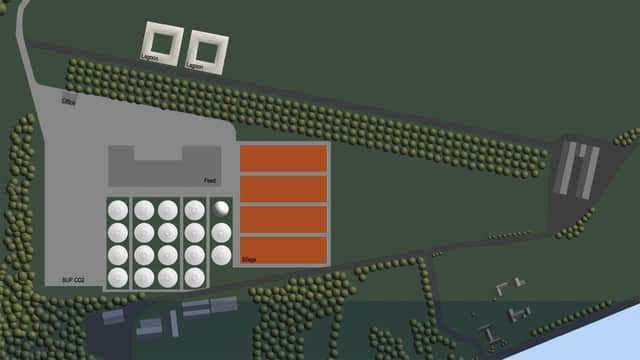Plans for green energy plant on former wartime airfield


The anaerobic digestion plant would handle 182,000 tonnes of waste a year, according to pre-application documents submitted to North Kesteven District Council.
The proposed construction would happen on an eight hectare site east of the B1189 near Martin Moor. The old airfield reverted to farmland.
Advertisement
Hide AdAdvertisement
Hide AdIt would include 16 digestion tanks, each 25m tall and 23m wide, as well as a waste reception building.
Anaerobic digestion sees animal, plant and food waste broken down to produce renewable biogas. A small amount could be used for producing heat and electricity, with the rest exported to the local grid.
According to the documents submitted to NKDC, it would create significant levels of traffic, with 30 HGVs a day dropping waste off and another 40 picking up the by-products which can be used as fertiliser.
The council notes it could also impact the air quality and noise levels for surrounding residents and businesses. The applicant, Green Create Ltd, will have to carry out studies before a formal planning application is submitted.
Advertisement
Hide AdAdvertisement
Hide AdPlanning officers add that given the scale of the development, “we would also strongly encourage the applicant to undertake proportionate pre-application consultation with the local community”.
A request for guidance has also been submitted to Lincolnshire Council County.
Plans say the digestion plant would be identical to one already operated by the company in the Netherlands, which generates 3.0 MW of electricity, 3.1 MW of heat and 27 MW of biomethane gas for the national grid from poultry manure.
The majority of the feedstock for the digester would come from Lincolnshire farms, according to the plans.
Advertisement
Hide AdAdvertisement
Hide AdGreen Create says the plant would help to produce more environmentally-friendly energy.
“The applicant’s mission is to treat and derive tangible value from large agricultural and industrial otherwise neglected waste streams,” the statement says.
“The vision is to create a greener future by providing low carbon fuels to the transport sector and aiding in the reduction of global carbon emissions.”